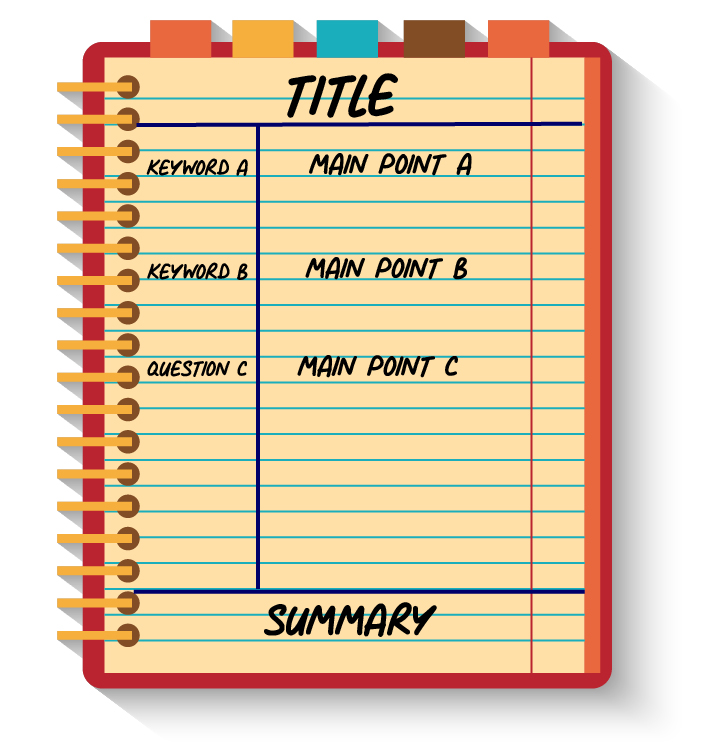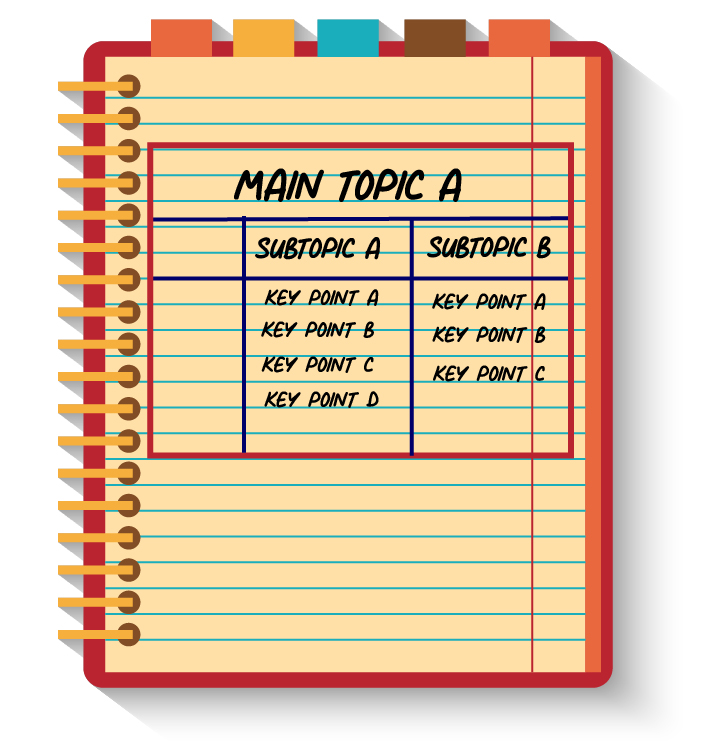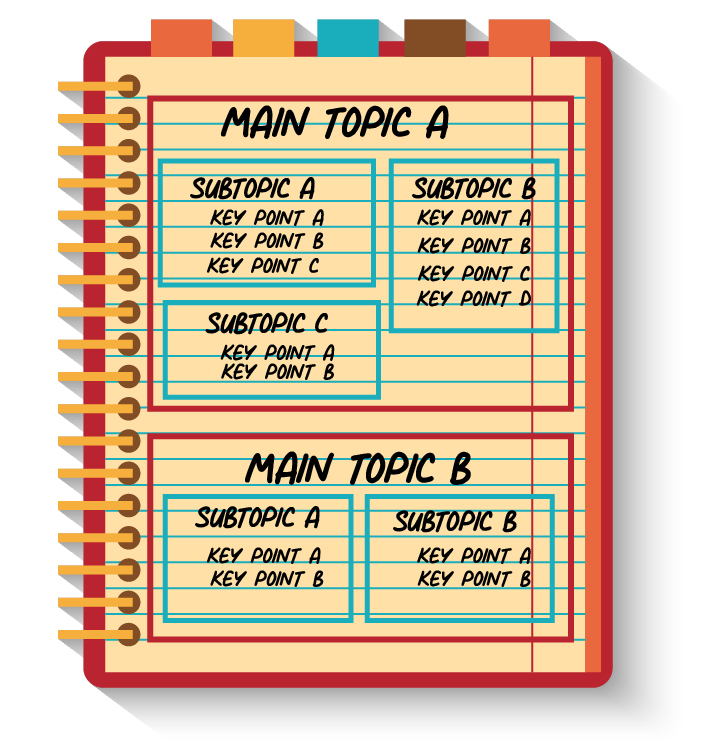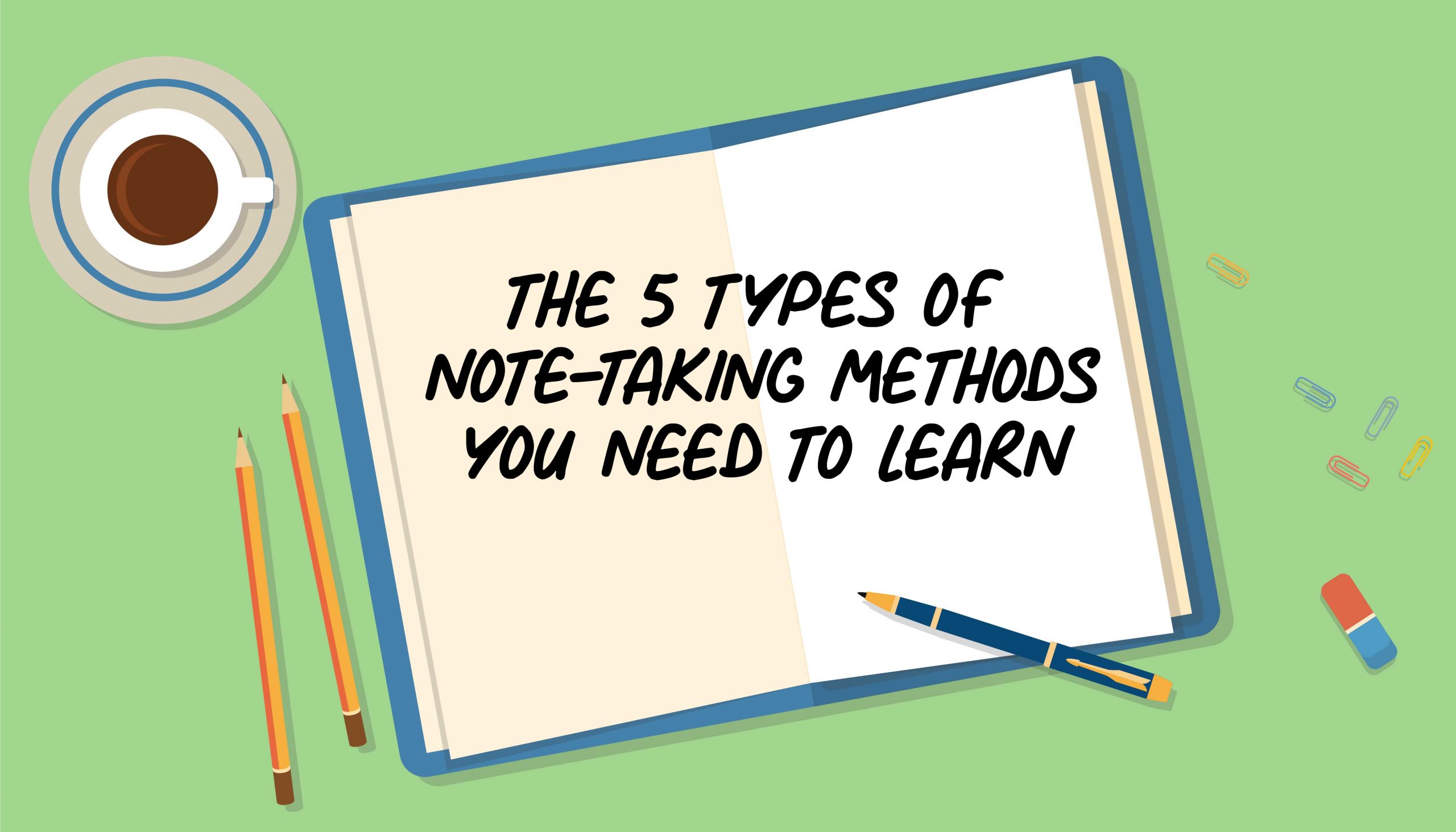The 5 Types of Note-Taking Methods You Need To Learn
Note-taking is an essential part of student life but did you know that there are various methods of note-taking? In fact, there is a whole variety of fascinating different note-taking methods that are all designed to make you learn better and smarter. Read on to find out what they are:
5) Cornell Method
One of the classics, the Cornell Method was developed by education professor Dr. Walter Pauk of Cornell University in the 1940s. This note-taking method recommends students to divide a page into three sections: Notes (Right), Cues (Left) and Summary (Bottom).
The note section should be bigger and comprise of main ideas taken from lectures or text in the form of short sentences, formulas or diagrams. Key words on the subject or relevant questions are written in the cues section. Furthermore, the summary section is a review of the main points of that lesson or chapter.

This note-taking method makes your notes all looked organized and clean. However, it also helps you study better. Research shows that The Cornell Methods makes students to absorb the information that is given at a faster rate. You do this by covering the notes section when doing a review and using the cue section’s keywords or question as prompts to remember what’s in the notes sections. It’s recommended for you do this a few times. Testing yourself is one of the most effective methods of strengthening a memory.
4) Outline Method
Undoubtedly the most popular and simplest of the note-taking methods is the outline method. You organize your notes with a main topic, then a sub topic that is indented to the right below it then supporting fact that are further intended to the right below that. Basically, you outline your notes using bullet points.

Its popular because its quick and easy, you don’t have to waste much time editing or reviewing notes while also being logically structured in an easy to read way. However, it can look more messy in classes that feature graphs, diagrams or formulas. Also, it can be difficult to use this method if your lesson does not have a structured and coherent flow and jumps from topic to topic.
3) Mapping Method
Another popular and frequently used note-taking method is the mapping method. Mind maps in particular help students visualize information in a pleasing and organized manner. Some people like to color their maps to make it even more visually appealing.
There is no fixed way of mapping, you can start the placement of your main topic at the top of the page, the side or the center. However, the idea is to branch out from there with subtopics and branch out even further with more supporting details. Hence, your map may end up looking like a bar chart or a tree. A key advantage is you can draw out interesting connections between your points.

However, this note-taking method may not before everyone. As mapping doesn’t follow an organized structure like The Cornell Method, a less organized or visually attuned person may make messy and disorganized mind maps. You could easily misuse and run out of space on your page.
2) Charting Method
Who doesn’t love tables and spreadsheets? I know I do, I dream of them all the time. The Charting Method is done by organizing notes into a table with distinct rows and columns separated by categories. This is especially useful for classes where there are many relationships between facts and ideas. Obviously, it is most effective for you to make comparisons between each topic.

Similar to mapping it is visually appealing while also being easy to look at and comprehend. Charting takes time though and its not recommended to be done concurrently with lectures.
1) Boxing Method
The Boxing Method requires you to put your notes in…. you guessed it, boxes! Each page of your notes is filled with several boxes. Inside the boxes are all interrelated content. You can divide the boxes by topics or subtopics as you choose. The advantage of this note-taking method is that it’s also simple and visually appealing.
It allows you to compartmentalize ideas in a organized and effective manner. You can review and focus on one box thoroughly first before you move on to another. However, similar to charting this note-taking method is not suitable to be used during lectures as it requires more time to organize.

Remember, you aren’t just married to one note-taking method. Use each for different occasions. For example, use the outline method during fast paced lectures then rewrite the notes with the charting and boxing method for more better visuals. Experiment around and find out which is best for you.
Furthermore, did you know there is a significant difference between hand writing notes versus typing them? Check out our study tips and tricks page for more interesting facts.







